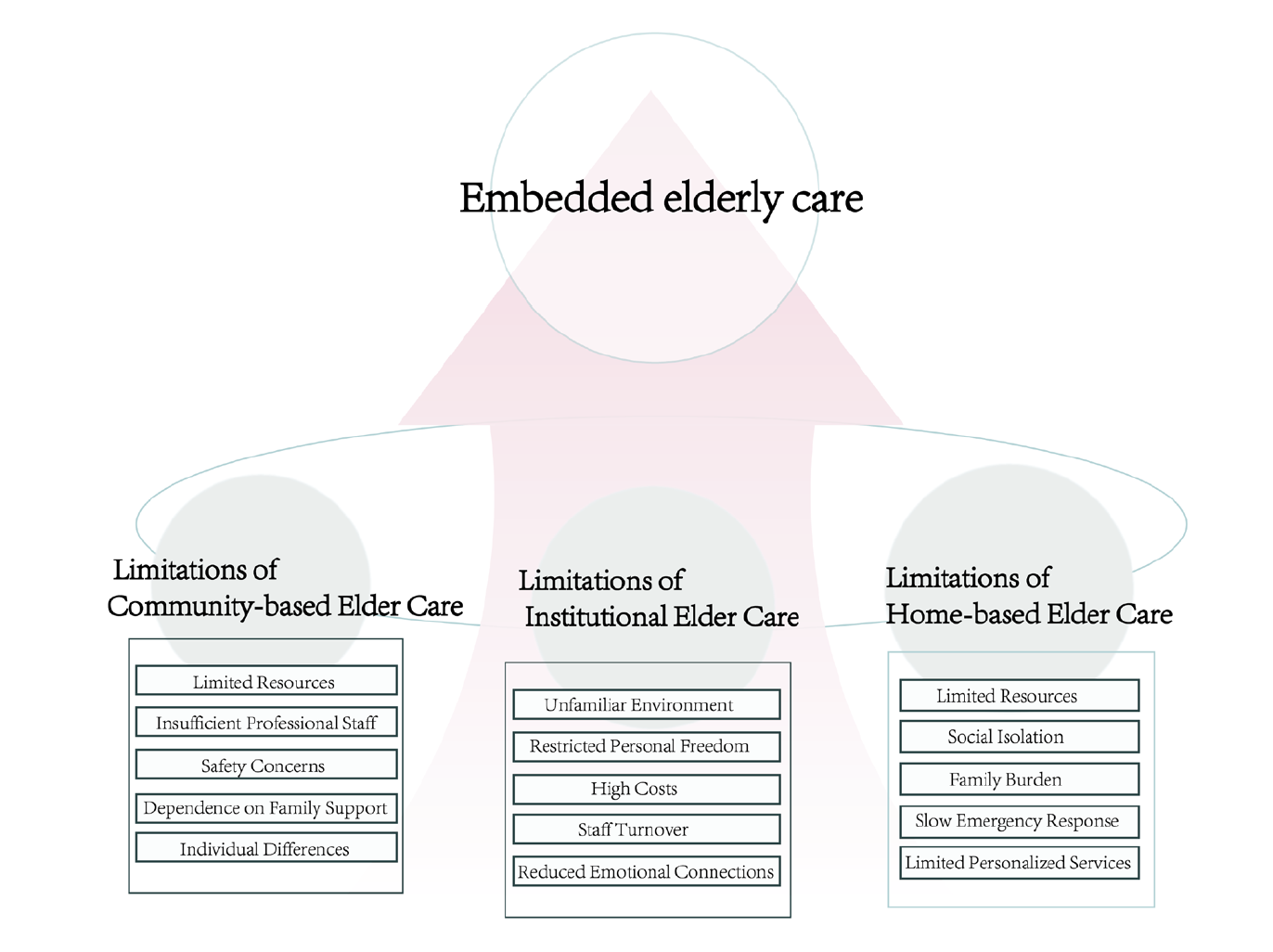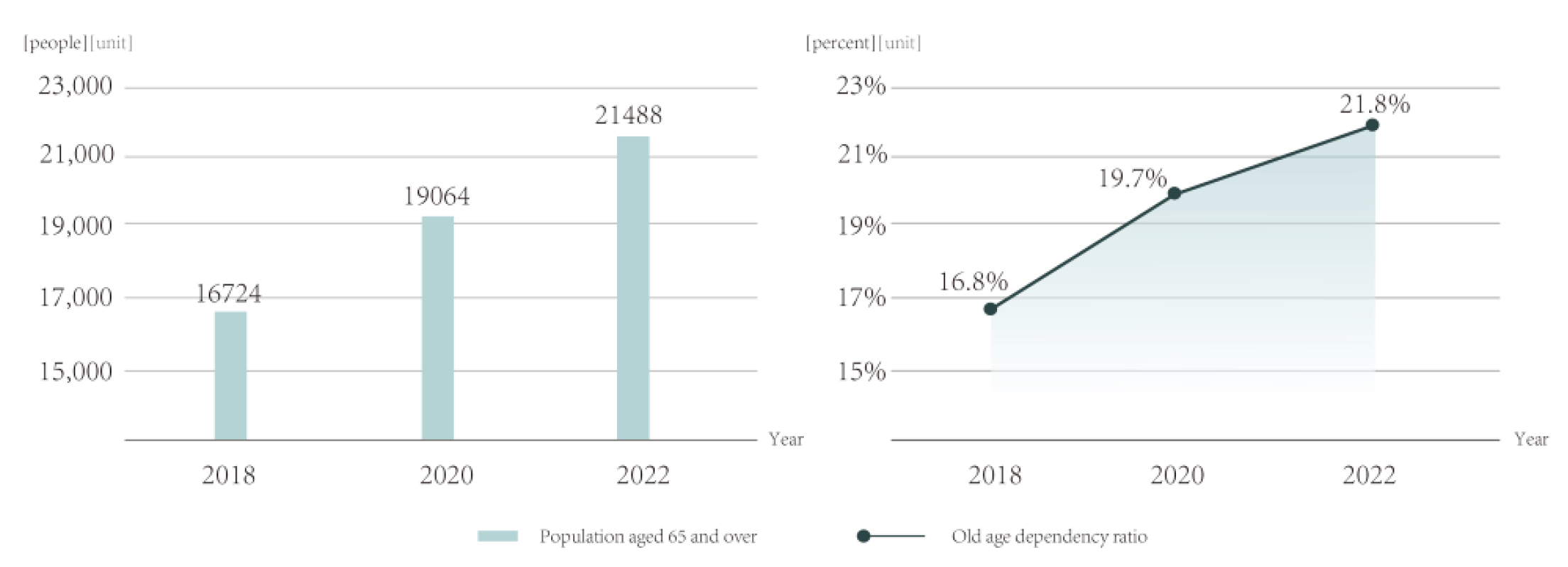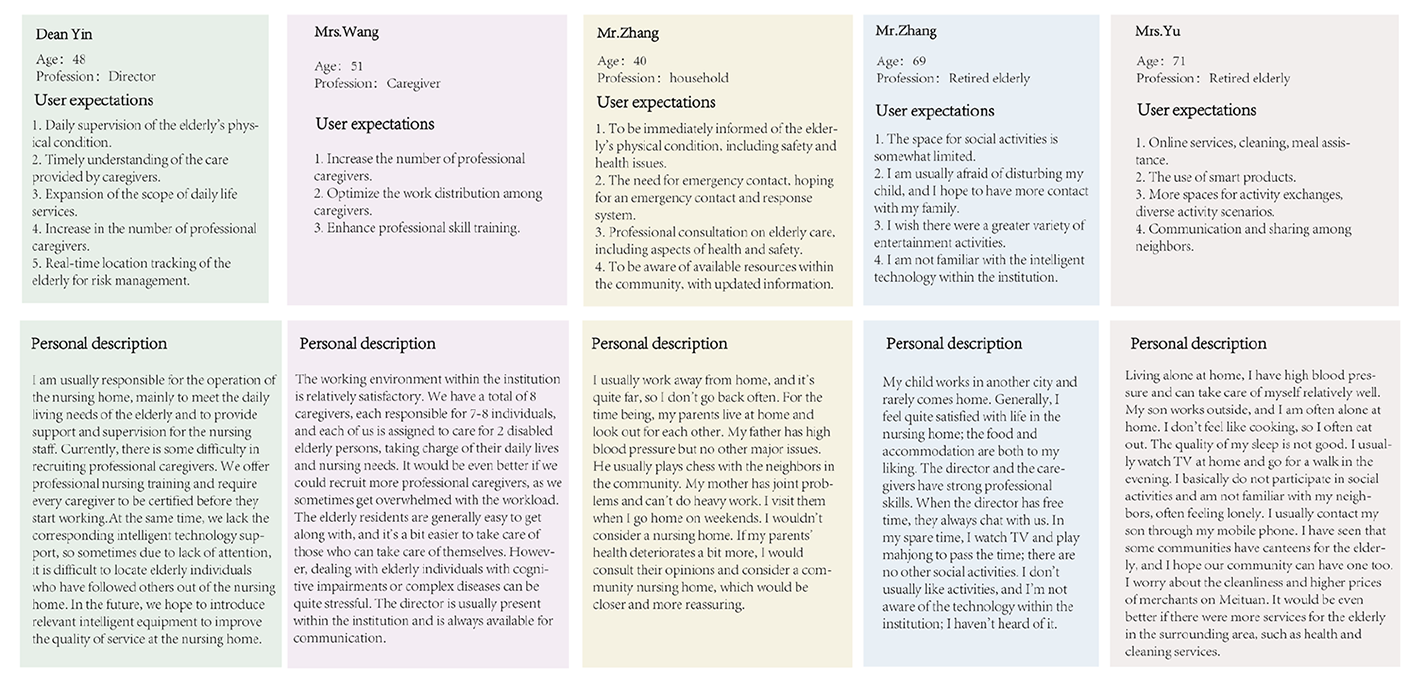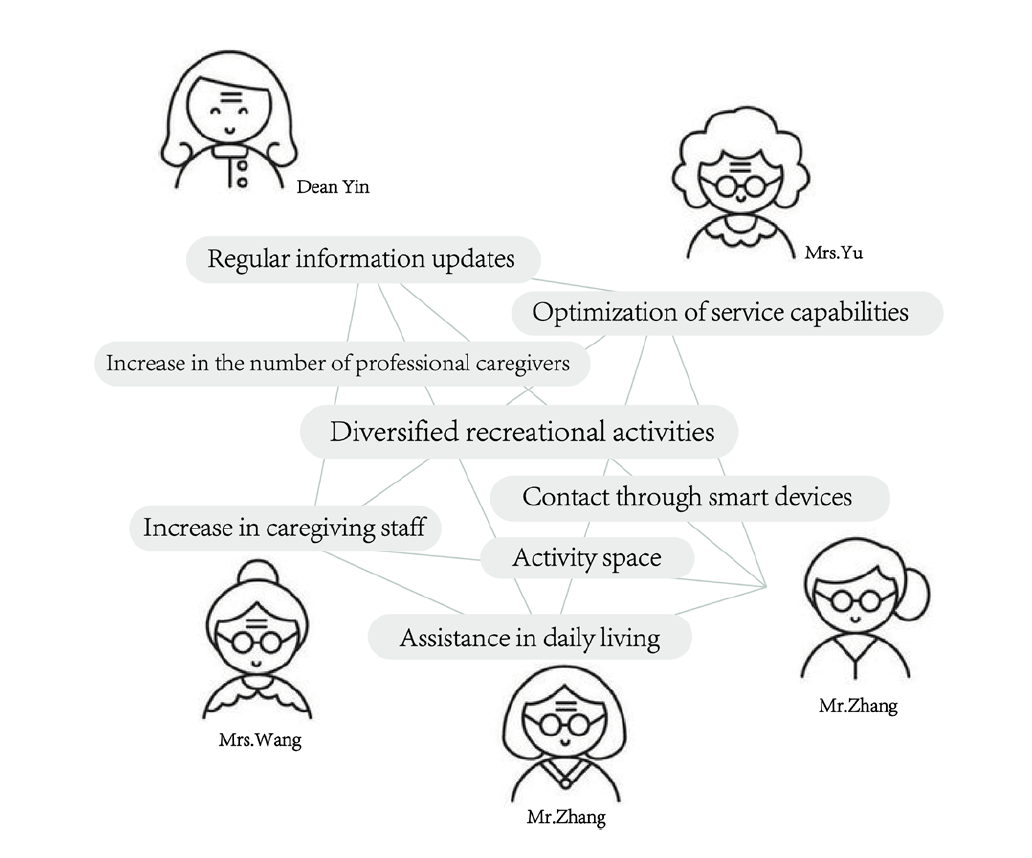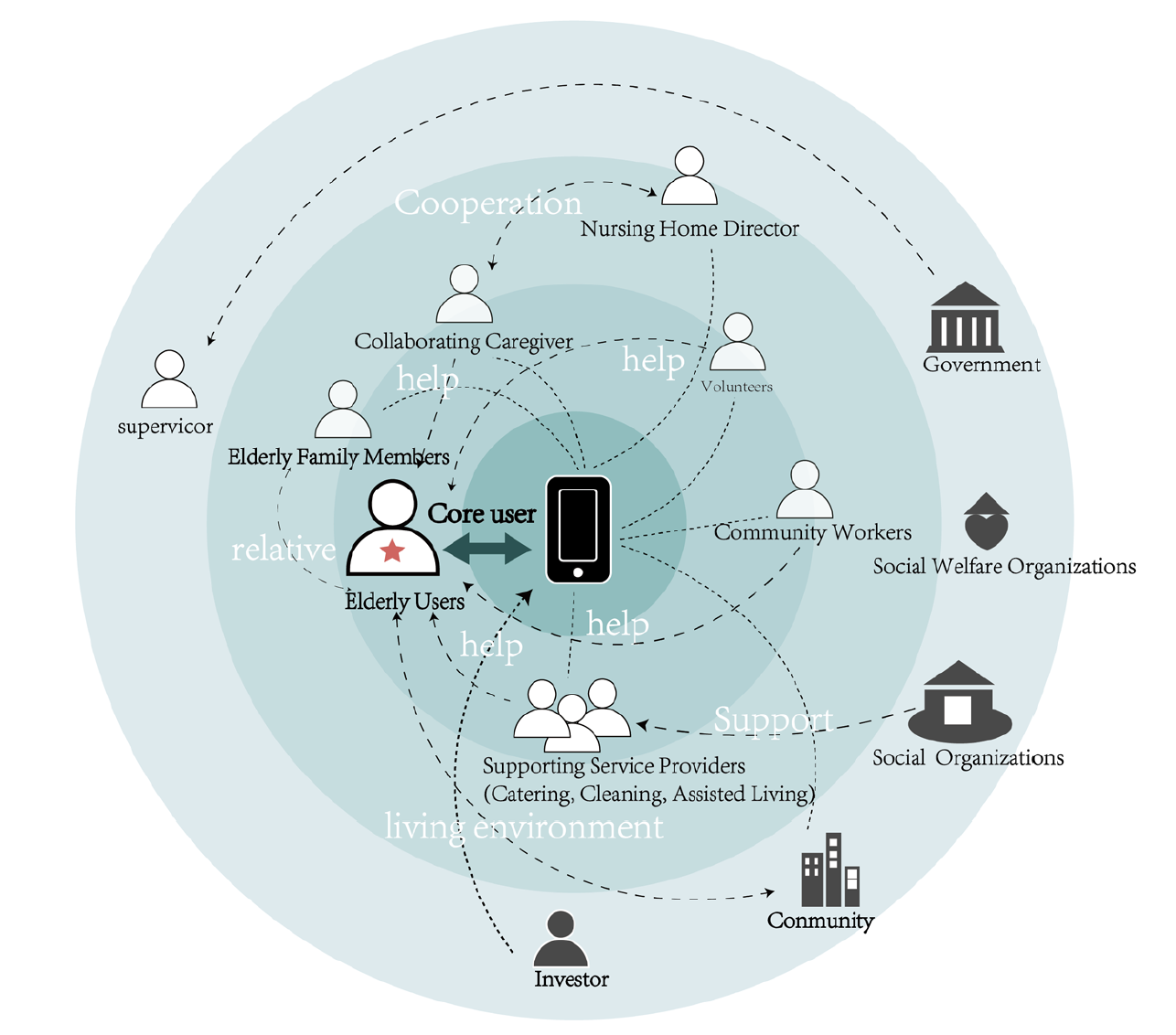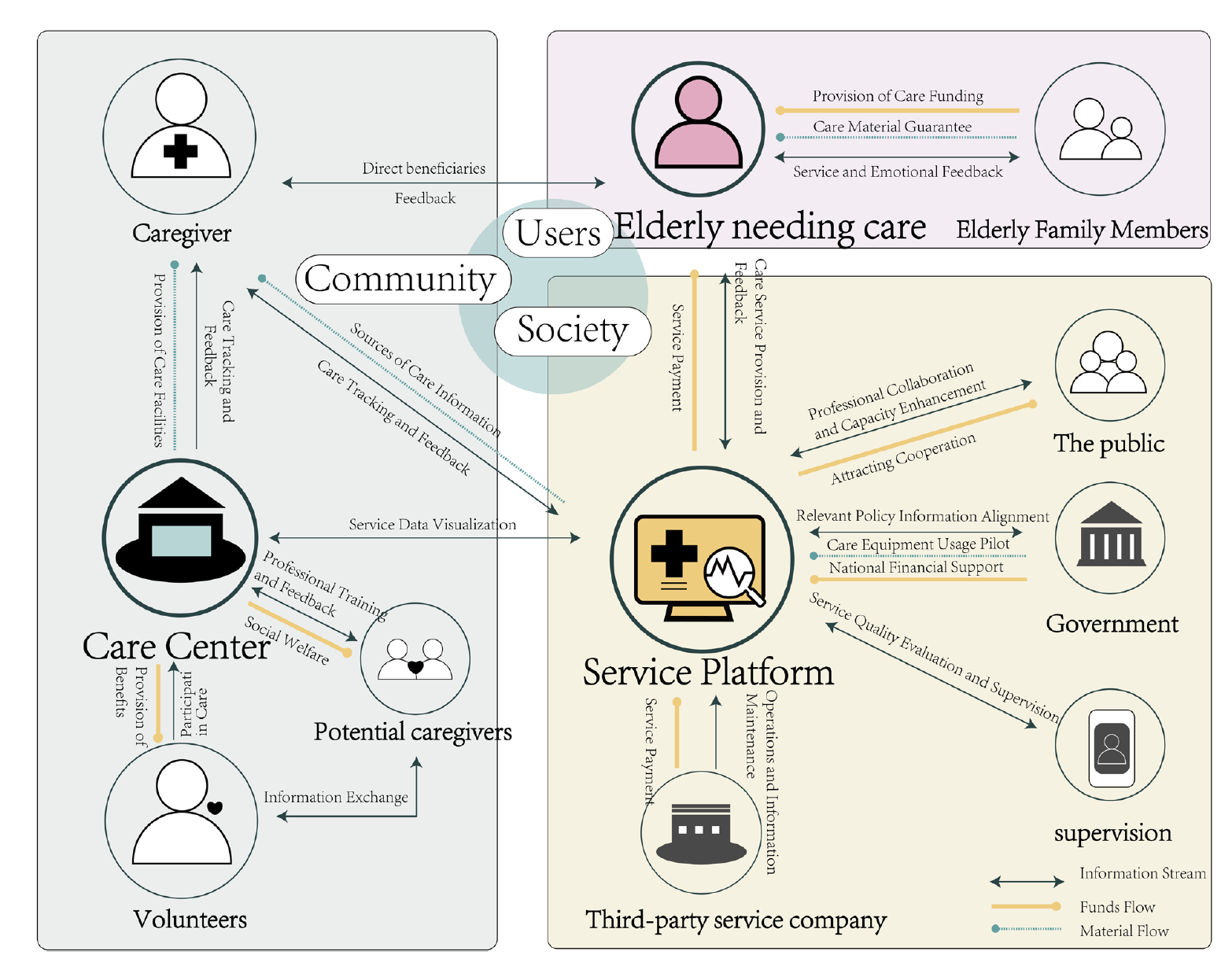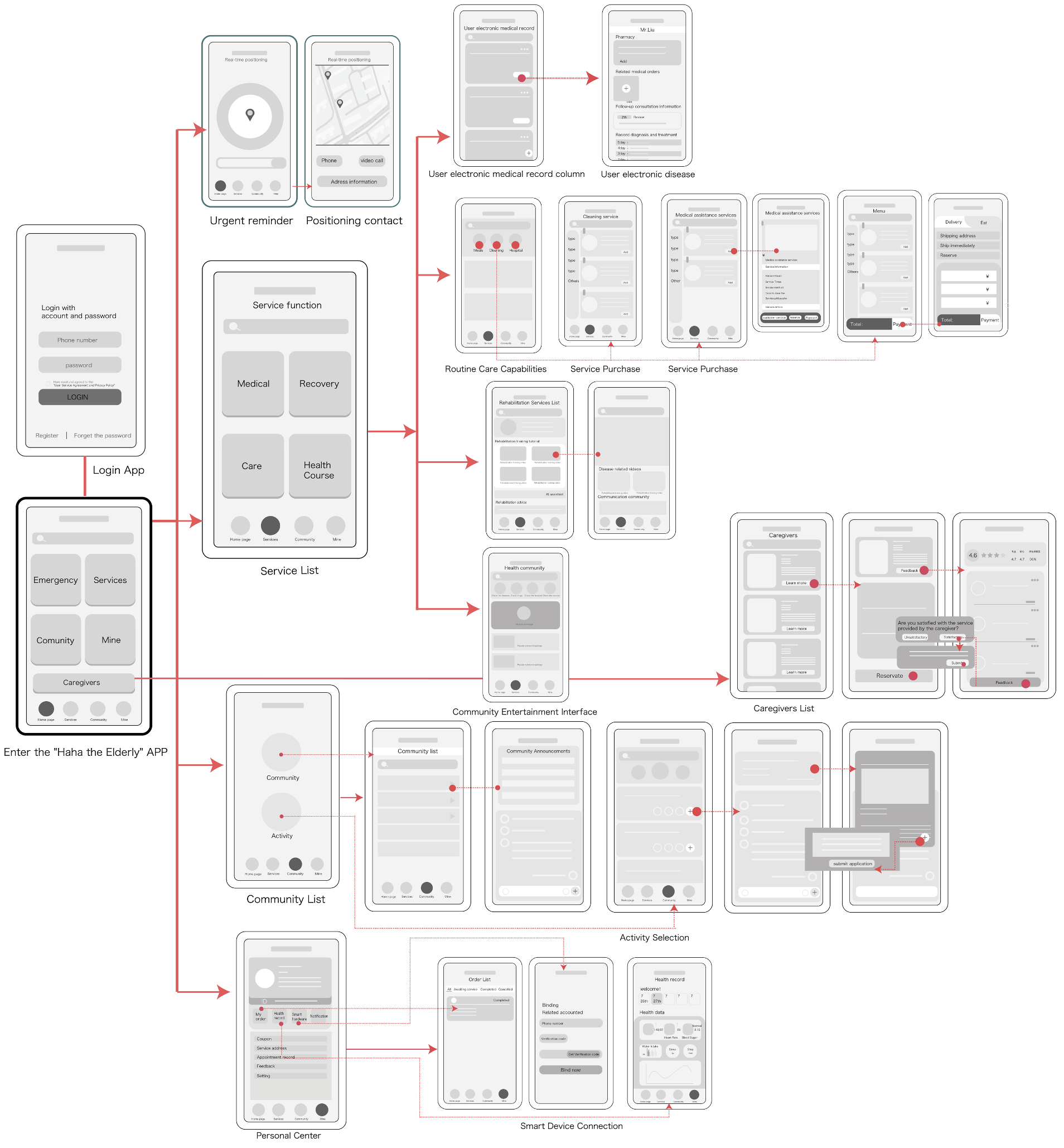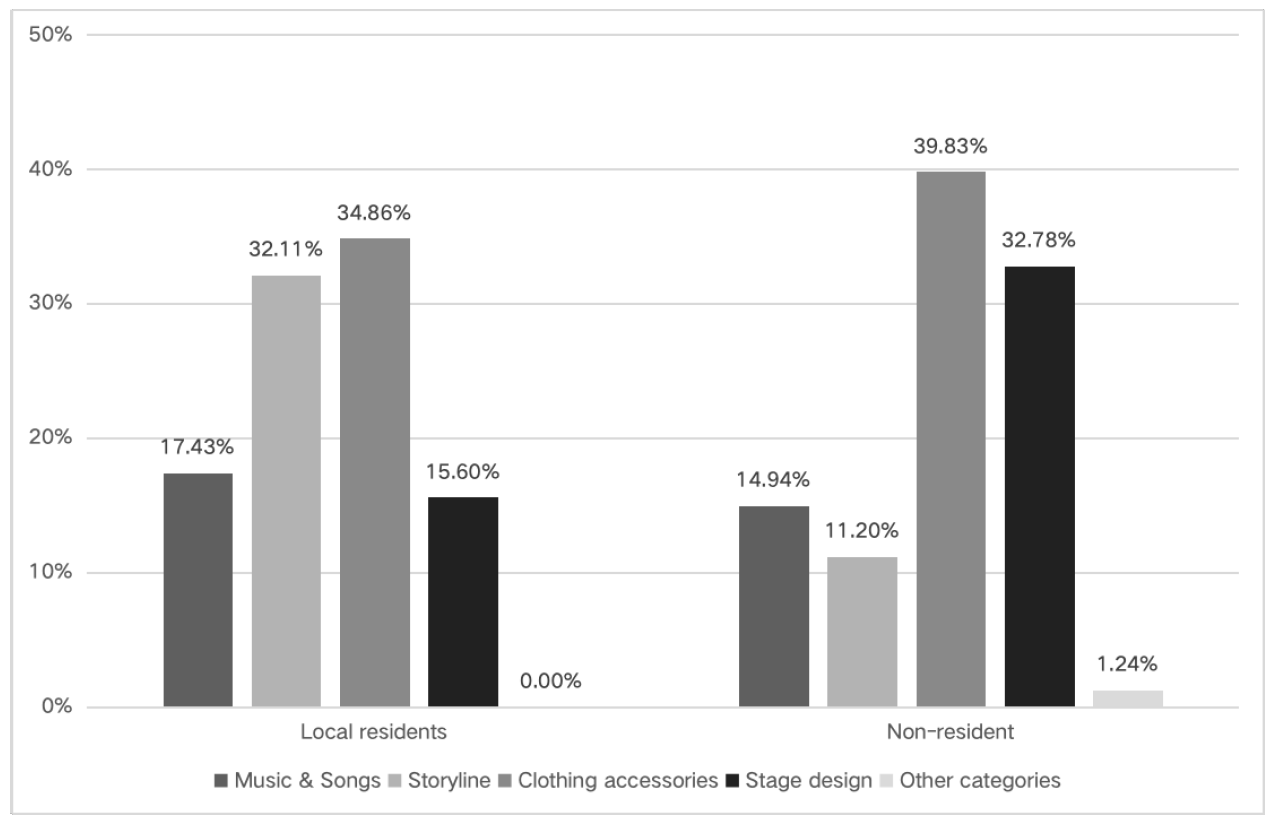The community-embedded elderly care model is characterized by leveraging the community as a platform and adopting the concepts of resource embedding, functional embedding, and diversified operational embedding. This approach introduces a market-oriented elderly care system within the community through competitive mechanisms, integrating surrounding elderly care resources to provide professional, personalized, and convenient services for nearby elderly residents. Several developed countries entered the class of aging societies earlier, and their provision and development of community-based elderly care services began relatively sooner. Their well-established integrated care models are worth studying and emulating.
In Western countries, such as the United States, the United Kingdom, and Denmark, three primary elderly care models emerged after years of exploration and development: medical care + community service, welfare state + community care, and welfare state + autonomous groups. Take the UK as an example, as a model welfare state, it introduced the concept of community elderly care in the early 20th century. The passage of Community Care legislation in 1900 marked the beginning of community care as a new approach to addressing the challenges of an aging society. In 1958, the UK’s health minister proposed the idea that “home care is the best option,” emphasizing the importance of supporting elderly people living independently through home-based services. In 1989, the UK’s “Community Care White Paper” formally introduced two community care models: Care within the Community and Care by the Community. The former provides care from a remedial perspective, whereas the latter offers preventive and developmental services to elderly individuals.
Through these two models, the UK’s community care system has achieved comprehensive coverage, spanning from younger seniors to elderly individuals and providing services from daily care to end-of-life care. After decades of development, the UK’s community care system has evolved distinct characteristics, such as community-based services, diversity, public-private collaboration, people-centered approaches, and professionalization. It has become a key representative of modern aging society policies. For its part, Denmark has developed a comprehensive community-based elderly care system centered on “aging in place,” offering both hardware and software services and housing construction [9].
In contrast, Japan is representative of a highly aged society. Since the 1980s, Japan has been actively exploring community-embedded elderly care models to address the social challenges posed by its continuously increasing elderly population, a phenomenon that began in the 1970s. The introduction of the Elderly Health Law in 1982 laid the foundation for community elderly care in Japan, with families and communities sharing responsibility for elderly care. The subsequent Gold Plan and New Gold Plan further strengthened community elderly care services by establishing various caregiving facilities, including special elderly homes, daycare centers, and short-term caregiving accommodations, promoting home-based care as the main elderly care model. Over 30 years of development, Japan has gradually built a community-embedded elderly care system covering both urban and rural areas [10].
Japan has long been committed to creating a social environment that supports the health and well-being of its elderly citizens, with a core focus on the collaborative improvement of both the material and social dimensions of community settings [11]. From a social perspective, Japan adopts a systematic design to offer elderly citizens more opportunities to participate in social life, including caregiving services, social engagement, and physical activities [12], thereby enhancing their sense of social belonging and overall happiness. This strategy not only addresses the increasingly diverse needs of the elderly but also effectively promotes the overall health and sustainability of society.
Furthermore, as the healthy life expectancy of elderly individuals continues to increase, the need for a more comprehensive and supportive service system has become particularly urgent. This system not only helps elderly individuals maintain independent lifestyles but also fosters their active participation in community life [13]. From the perspective of community service design, Japan emphasizes balancing welfare, caregiving, and health services by integrating community resources and optimizing service spaces and functional layouts to establish a multilevel and coordinated support system [14]. This system, while providing comprehensive services, demonstrates the unique advantages of collaborative design between material and social environments. It effectively improves the quality of life for elderly individuals and offers valuable insights and models for other countries and regions in addressing the challenges of an aging population.
In the face of this challenge, it is necessary to actively respond to population aging by building a comprehensive policy system and social environment for elderly care, emphasizing filial piety and respect for the elderly. This includes promoting the integration of medical services with elderly care and accelerating the development of the elderly care industry and services [2]. The current development plans propose to improve the community-based home care service network, promote the age-friendly transformation of public facilities, extend professional institutional services to communities, and integrate and utilize existing resources to develop community-embedded elderly care [3]. These measures are key in implementing a strategy for effectively addressing population aging and represent significant innovations in enhancing the existing elderly care service system.
With the development of emerging technologies, such as blockchain, artificial intelligence, and big data, new service formats, and innovative service models have been greatly affected, increasing the service capacity and level of elderly care. In 2015, the “Guiding Opinions on Actively Promoting the ‘Internet Plus’ Action” was issued, which explicitly proposed to “rely on existing internet resources and social forces, and build an elderly care information service network platform based on the community, providing home-based elderly care services such as nursing, health management, and rehabilitation care [4].” This document provides foundational guidance for the development of “smart elderly care services” in China. Under this guidance, China’s elderly care service industry began to integrate deeply with the Internet and develop towards smart elderly care. In this context, establishing and utilizing smart community-embedded elderly care service models can, to a certain extent, address the issues of information silos and poor communication between multiple entities in the elderly care sector, thus achieving intelligent and precise elderly care services and effectively promoting the development of such services [5].
The intensifying trend of population aging, combined with the integration of information technologies, such as the Internet and big data, into elderly care services, has generated new demands for the optimization and upgrading of service systems and models in China. This study adopts the Dongfang Embedded Elderly Care Home in Wuhan as a case study focus, applies service design methods to uncover the genuine needs of the elderly population of the home, and analyses the current operational status and problems arising within the home’s service system. The aim is to optimize the elderly care service system through the concept of smart technology, thus defining the functional positioning of smart elderly care services and the logic of platform construction. This approach is intended to facilitate the practical transformation from the concept of smart technology to actual smart elderly care and to provide a reference for the development of other embedded elderly care homes.
Building on the foundation of offline community-embedded elderly care service stations, an online community elderly care app was developed to ensure effective interaction between stakeholders and elderly individuals, thereby enhancing the timeliness of elderly care services and forming a service model that integrates both on- and offline development. The embedded elderly care service environment encompasses three key components—society, community, and service users—with caregivers and volunteers within the community being recruited and trained through service stations. Support from the government and third-party enterprises plays a crucial role in advancing the service platform and fostering a healthy elderly care ecosystem.
In line with the Internet Plus trend, the integration of fragmented elderly care resources through Internet technology was used to establish an embedded elderly care service platform [26]. This platform enables elderly users and their families to book and subscribe to services while providing them with health data analysis and visualization. Drawing on Shanghai’s mature integrated on- and offline elderly care service model, this platform offers expanded possibilities for addressing elderly care needs and promotes the sustainable development of embedded elderly care services through digital technology [27].
2. Embedded Elderly Care Services and Their Development
Elderly care services cater primarily to the basic living needs of seniors, aiming to meet their fundamental material and spiritual needs. These services include daily care, agency services, medical care, medical assistance, health consultations, rehabilitation services, and housekeeping [6]. Traditional elderly care methods vary based on context and can be divided into three main models: home-based care, community-based care, and institutional care. “Home-based care” refers to elderly individuals receiving daily life care and medical services at home, thus maintaining their autonomy and privacy while leveraging the familiarity of the home environment to provide comfort and security. Community-based care involves providing elderly care services within the seniors’ wider residential community, including daycare centers, community medical stations, and cultural and recreational facilities [7]. This model emphasizes the sharing of community resources and the social participation of seniors. “Institutional care” refers to elderly individuals receiving round-the-clock care and nursing services in professional settings, such as nursing homes and care centers. This model offers more professional and systematic elderly care services.
However, each of these traditional elderly care models has limitations [8] (Figure 2). The embedded elderly care model emerged to address these limitations. This model compensates for the shortcomings of traditional elderly care models and has gradually gained popularity among seniors.
Abstract
The community-embedded elderly care system in China integrates the advantages of home-based and institutional care, leveraging digital technologies and innovative service models to meet the diverse needs of elderly individuals. However, existing embedded elderly care service systems face challenges, such as service singularity and insufficient functional coverage, making it difficult to meet the increasingly complex demands of elderly individuals. This study adopts the Dongfang Elderly Care Home in Wuhan as a case study focus and employs service design methods. Through semi-structured interviews, user personas were constructed to identify user characteristics and core needs. A stakeholder map was created to categorize and clarify the roles and needs of core users, internal operational staff, and external partners. The study systematically analyses the needs of elderly individuals, service providers, and other stakeholders, providing a theoretical foundation for system development. In addition, a collaborative model that integrates community service centers, embedded nursing homes, and medical centers is proposed. The study also develops an embedded elderly care service system framework centered on the Haha Elderly Assistance App. By utilizing internet-based data-sharing technologies, this study optimizes information transmission efficiency, enhances the diversity of service functions, and, in turn, strengthens the psychological security and health of elderly individuals. Through the integration of service design and digital technology, this research promotes the systematic, standardized, and convenient development of community-embedded elderly care services, providing theoretical support and practical guidance for the innovative construction of high-quality urban community elderly care services.
References
1. “2020 China Census Yearbook.” Accessed July 27, 2024. https://www.stats.gov.cn/sj/pcsj/rkpc/7rp/zk/indexch.htm. (In Chinese)
2. Xing, Y. “Research on the The Central People’s Government of the People’s Republic of China. Last modified October 27, 2017. https://www.gov.cn/zhuanti/2017-10/27/content_5234876.htm. (In Chinese)
3. Jian Huang. “Integration and Empowerment: Optimization Research on Community Embedded Elderly Care Service Models.” Academic Circle 5 (2022): 151–160. (In Chinese)
4. “Opinions of the General Office of the State Council on Promoting the Development of Elderly Care Services.” The Central People’s Government of the People’s Republic of China. Last modified January 18, 2020. http://www.gov.cn/zhengce/content/2019-04/16/content_5383270.htm. (In Chinese)
5. Lianxin Jiang and Zhongwu Li. “Research on Influencing Factors of Elderly Care Institutions’ Choice Intention Based on Artificial Intelligence and Embedded System.” Journal of Ambient Intelligence and Humanized Computing (2021): 1–12. [CrossRef]
6. Juxian Wei. “Design Strategies for Health Management Services Aimed at Community-Based Home Elderly Care.” Master’s thesis, Beijing Institute of Graphic Communication, 2020. (In Chinese)
7. Bo Gao and Zhipeng Duan. “Service Design Research on Community Treatment for Elderly Diabetes Patients.” Packaging Engineering Art Edition 38, no. 10 (2017): 42–47. (In Chinese)
8. Li Li and Shuoyi Zhu. “Research on the Development Strategy of Community Embedded Elderly Care Services Under the Empowerment of Information Technology.” In 2022 2nd International Conference on Public Management and Intelligent Society (PMIS 2022), 741–750. Atlantis Press, 2022. [CrossRef]9. Jiang Wan, Han Yu, and Yin Wu. “Comparative Study of Foreign Elderly Care Models: Case Studies of the United States, Denmark, and Japan.” Southern Architecture 2 (2013): 77–81.
10. Han Yu. “Research on the Construction and Development of Elderly Care Facilities in Japan.” Master’s thesis, Southwest Jiaotong University, 2013.
11. T. Buffel and S. Handler. Age-friendly Cities and Communities: A Global Perspective. Policy Press, 2018. [CrossRef]12. Bach Q. Ho and Kunio Shirahada. “Barriers to Elderly Consumers’ Use of Support Services: Community Support in Japan’s Super-Aged Society.” Journal of Nonprofit & Public Sector Marketing 32, no. 3 (2020): 242–263. [CrossRef]
13. Myo Nyein Aung et al. “Age-Friendly Environment and Community-Based Social Innovation in Japan: A Mixed-Method Study.” The Gerontologist 62, no. 1 (2022): 89–99. [CrossRef]
14. Japan Ministry of Health Labour and Welfare. Report of the Study Group for Japan’s International Contribution to ‘Active Aging’. 2014. https://www.mhlw.go.jp/stf/shingi/0000041697.html.
15. Zhanlian Feng et al. “Long-Term Care System for Older Adults in China: Policy Landscape, Challenges, and Future Prospects.” The Lancet 396, no. 10259 (2020): 1362–1372. [CrossRef]
16. Ping Zhang. “Embedded Elderly Care: Research on Innovative Elderly Care Service Models in Shanghai.” Modern Management Science 6 (2016): 64–66.
17. “Notice from the Ministry of Civil Affairs and the Ministry of Finance on the Implementation of the First Batch of Central Financial Support for Pilot Projects in Home and Community-Based Elderly Care Services Reform.” The Central People’s Government of the People’s Republic of China. Last modified April 15, 2017. http://www.xawl.edu.cn/laoganchu/info/1054/2050.htm. (In Chinese)
18. “The Ministry of Civil Affairs and the Ministry of Finance Jointly Launch Pilot Projects for the Reform of Home and Community-Based Elderly Care Services.” The Central People’s Government of the People’s Republic of China. Last modified July 19, 2016. https://www.gov.cn/xinwen/2016-07/19/content_5092825.htm. (In Chinese)
19. Martin Zuniga, Eva Salaberria, and Felix Arrieta. “An Analysis of the Role of Communities in Care Systems Co-Created with Older People.” Public Management Review 22, no. 12 (2020): 1799–1818. [CrossRef]
20. Bo Hu et al. “Home and Community Care for Older People in Urban China: Receipt of Services and Sources of Payment.” Health & Social Care in the Community 28, no. 1 (2020): 225–235. [CrossRef]
21. Bo Xie et al. “When Going Digital Becomes a Necessity: Ensuring Older Adults’ Needs for Information, Services, and Social Inclusion During COVID-19.” In Older Adults and COVID-19, 181–191. Routledge, 2021. [CrossRef]
22. Johan Blomkvist, Stefan Holmlid, and Fabian Segelström. “Service Design Research: Yesterday, Today and Tomorrow.” (2010): 308–315.
23. Daniela Sangiorgi, Filipe Lima, Lia Patrício, Maíra Prestes Joly, and Cristina Favini. “A Human-Centred, Multidisciplinary, and Transformative Approach to Service Science: A Service Design Perspective.” Handbook of Service Science, Volume II (2019): 147–181. [CrossRef]
24. Linda Alkire, Christine Mooney, Furkan A. Gur, Sertan Kabadayi, Maija Renko, and Josina Vink. “Transformative Service Research, Service Design, and Social Entrepreneurship: An Interdisciplinary Framework Advancing Wellbeing and Social Impact.” Journal of Service Management 31, no. 1 (2020): 24–50. [CrossRef]
25. Nicolas Fourty et al. “Embedded System Used for Classifying Motor Activities of Elderly and Disabled People.” Computers & Industrial Engineering 57, no. 1 (2009): 419–432. [CrossRef]
26. Fang Qu and Hua Guo. “Research on Smart Elderly Care Models Under the Perspective of ‘IoT + Big Data’.” Journal of Information Resource Management 7, no. 4 (2017): 51–57. (In Chinese)
27. Yuanwu Shi, Liangwei Xiang, Xia Liu, and Jie Liu. “Design Research on the Community ‘Medical-Rehabilitation-Care’ Symbiotic Service System Based on Symbiosis Theory.” Packaging Engineering Art Edition 44, no. 6 (2023): 74–83. (In Chinese)
28. Jingxian Zhu and Renke He. “Usability Testing Research on Android Mobile Application Interface Layouts.” Packaging Engineering (Engineering Edition) 35, no. 10 (2014): 61–64. (In Chinese)
© 2025 by the authors. Published by Michelangelo-scholar Publishing Ltd.
This article is published under the Creative Commons Attribution-NonCommercial-NoDerivs 4.0 International (CC BY-NC-ND, version 4.0) license (https://creativecommons.org/licenses/by-nc-nd/4.0/), which permits non-commercial use, distribution, and reproduction in any medium, provided the original work is properly cited and not modified in any way.
Share and Cite
Chicago/Turabian Style
Xinyi Ruan, and Jing Liu, "Research on Community-Embedded Elderly Care Services Powered by Digital Technology: Wuhan’s Dongfang Elderly Care Home" JAUD 2, no.1 (2025): 27-45.
AMA Style
Ruan XY, Liu J. Research on Community-Embedded Elderly Care Services Powered by Digital Technology: Wuhan’s Dongfang Elderly Care Home. JAUD. 2025; 2(1): 27-45.
Table of Contents
- Abstract
- Introduction
- Embedded Elderly Care Services and Their Development
- Materials and Methods
- Wuhan’s Dongfang Elderly Care Home and the Embedded Elderly Care App Service System
- Design Practice and Validation of Embedded Elderly Care App
- Conclusion
- Author Contributions
- Funding
- Acknowledgments
- Conflicts of Interest
- References
1. Introduction
Currently, the trend of population aging in China is becoming increasingly severe. According to the seventh national census, the number of elderly people aged 65 and above in China reached 167.24 million in 2018, with an elderly dependency ratio of 16.8%. By 2022, this number rose to 214.87 million, and the elderly dependency ratio further increased to 21.8%. Over the past five years, the elderly dependency ratio has risen by 5 percentage points [1] (Figure 1). It is projected that by 2030, the number of elderly people in China will exceed the total elderly population of all developed countries combined, reaching an unprecedented level of population aging.
Compared with those in developed countries, China’s elderly care policies and systems began relatively late. The country has been exploring various elderly care service models since China officially became an aging society in 1999. Shanghai initiated pilot programs for community-embedded, multifunctional, and comprehensive elderly care institutions in 2014 [15]. Following Shanghai’s early exploration, in 2017, the Ministry of Civil Affairs and the Ministry of Finance proposed increasing the provision of embedded home-based and community elderly care facilities [16].
That same year, “embedded elderly care” was formally included in national policy for the first time in the “Notice on the First Batch of Central Government-Supported Home and Community Elderly Care Service Reform Pilot Work,” which explicitly prioritized the establishment of embedded elderly care facilities within communities [17]. In 2022, the state proposed “cultivating a group of community elderly care institutions focused on caregiving services, extending support to surrounding communities, and offering door-to-door services [18].” This marked the formal introduction of embedded elderly care facilities at the national level, establishing a relatively complete system of facilities that provide caregiving functions. Drawing on Shanghai’s experiences, Jiangsu, Zhejiang, Beijing, and Hubei have started exploring localized embedded elderly care models, which have become a new type of elderly care model suited to China’s national conditions.
According to data from the seventh national census, the population aged 60 years and older in Hubei Province accounted for 20.42% of the permanent resident population there, exceeding the national average of 18.70%. It is projected that by 2030, Hubei Province will experience severe aging. In 2018, the People’s Government issued the “Implementation Plan for Promoting the ‘Internet + Home-Based Elderly Care New Model’ in Wuhan,” which marked the entry of Wuhan’s elderly care industry into a new phase of digital technology integration [19]. Since the national introduction of the “embedded” elderly care model in 2017, the Dongfang Elderly Care Home, as one of the initial pilot institutions, has developed a mature management and operational model, with an occupancy rate reaching 97%. In the context of Wuhan’s proactive promotion of digital policies, this study selects the Dongfang Elderly Care Home as a representative case to investigate how digital means can further enhance the quality of elderly care services in the face of increasing aging.
The embedded elderly care model places the community at its core, leveraging it as a central platform to integrate diverse market resources and establish a multitiered, multistakeholder collaborative service network. This approach enhances support for surrounding communities. A critical challenge within this model lies in employing a systematic design to achieve equitable distribution and efficient coordination of caregiving responsibilities, which is essential for improving the well-being of elderly individuals and their overall quality of life [20]. Moreover, many elderly individuals in communities express a strong desire to continue contributing to society. The integration of digital technologies offers innovative means to help such individuals fulfill this aspiration. For example, elderly individuals can participate in volunteer services more flexibly and virtually through online platforms, which not only strengthens their sense of social belonging but also injects new momentum into community empowerment [21].
In the pursuit of enhancing the quality of life for elderly individuals, designers should focus on creating user-centered hybrid solutions. The application of digital technologies establishes a highly interconnected service ecosystem, overcoming the spatial and temporal constraints of traditional caregiving models. This ecosystem connects elderly individuals with family members, neighbors, community organizations, and volunteer networks in meaningful ways. Simultaneously, it enables the continuous optimization of resource allocation and information flows, thereby improving experiences in health management, food supply, and other essential services [22]. Therefore, the integration of digital technologies into embedded elderly care services not only drives innovation in traditional service models but also demonstrates the potential of systematic design to enhance service sustainability and foster a shared sense of social responsibility.
6. Conclusion
This study explores the innovative application of digital technologies in the community-embedded elderly care model. It proposes a collaborative model that integrates community service centers, embedded nursing homes, and medical centers and constructs an embedded elderly care service system framework with the Haha Elderly Assistance App as the core platform. Through field research and user interviews, the study comprehensively collected and analyzed the needs data of various stakeholders in the Dongfang Elderly Care Home, using service design tools to systematically explore core needs in four areas: daily living assistance, health care services, community participation, and personalized user management.
The research findings indicate that the Haha Elderly Assistance App, through its innovative information architecture and functional design, effectively addresses the shortcomings of current embedded elderly care service systems in terms of service singularity and insufficient functional coverage. Its demand-driven design enhances the flexibility and adaptability of the service system, meeting the increasingly diversified living, health, and emotional needs of the elderly while significantly improving the user experience and sense of participation. Further analysis revealed that the integration of digital technology plays a crucial role in optimizing resource integration and service coordination, providing strong support for the sustainable development of community-embedded elderly care services and highlighting the extensive potential of digital technology in improving the quality of elderly care services.
However, the study also has limitations. This research focuses primarily on the Dongfang Community Elderly Care Home and its surrounding residents, which limits its scope and may affect the generalizability of the findings. Additionally, although core functional designs were proposed, the study did not fully address the differentiated needs of elderly users with varying physical conditions and cognitive levels, particularly with respect to personalized service design for groups with cognitive impairments and mobility restrictions.
Future research should expand the scope of the study to include more regions and types of community-based elderly care institutions, further optimize system functions, and design services that are more inclusive and adaptable. Additionally, the app’s interface and interaction design should be improved to reduce technological barriers and enhance the user experience for elderly individuals. In conclusion, this study provides new insights into the digital innovation of community-embedded elderly care models, reveals the critical role of digital technology in enhancing the efficiency and quality of elderly care systems, and offers valuable references for further optimization and promotion of embedded elderly care systems.
The development of user-profiles is crucial for analyzing issues, pain points, expectations, and underlying cultural characteristics related to users. User profiles also serve as a reference for the subsequent construction of care models, such as that of the Dongfang Elderly Care Service System.
To gain a comprehensive understanding of the roles and relationships within the service system, stakeholders of the Oriental Elderly Care Home were categorized and visually represented in a stakeholder diagram (Figure 5). This classification serves as a foundational step in the design process, enabling thorough consideration of the diverse needs and expectations of all involved parties during system construction.
As a healthcare institution embedded within the community, the Dongfang Elderly Care Home focuses on providing elderly individuals with advanced medical equipment and a professional caregiving staff. Moreover, the community space, which extends the activity area of the care home, offers a more spacious physical environment and a broader range of social opportunities for elderly individuals. This integration not only expands the living space for seniors but also enhances their social interactions. Moreover, the community service center effectively alleviates the workload of elderly care staff by recruiting volunteers through the community platform. This integrated development not only diversifies service functions but also addresses the psychological safety needs of elderly individuals.
The medical environment is crucial for ensuring the health and well-being of older adults. The collaboration between embedded care homes and medical institutions provides not only high-quality medical services but also essential rehabilitation training for patients after discharge. This approach helps avoid secondary injuries caused by inappropriate or unscientific rehabilitation methods [25]. With the internet for data sharing, these three components can ensure timely and efficient information transfer, thereby providing more comprehensive and high-quality services for elderly individuals. This “embedded” care model promotes the development of a more sustainable elderly care system.
4.4. Service System Design
Through detailed user research and systematic design analysis, this study strategically planned the service system of the Dongfang Elderly Care App platform from a macro perspective (Figure 7).
4. Wuhan’s Dongfang Elderly Care Home and the Embedded Elderly Care App Service System
4.1. Current Status of the Dongfang Elderly Care Home in Wuhan
Field research and semi-structured interviews revealed that the Dongfang Elderly Care Home currently provides services across various aspects, including daily care, medical health, and emotional support.
However, the home’s practical operation faces several problems. Specifically, in terms of daily care, existing emergency assistance and basic caregiving services are relatively limited in coverage, which may result in inadequate timely help during emergencies or in meeting daily care needs. Additionally, resources for medical health services, particularly chronic disease management and home visits, are constrained, potentially affecting the timely management and treatment of health issues in elderly individuals. Although emotional support services are available, entertainment activities are relatively monotonous and require more personalized and diverse options to meet the varied needs of elderly individuals.
When designing an embedded elderly care service system, it is crucial to address these service deficiencies comprehensively. The system’s development should be based on identifying the gaps in current services and formulating a practical functional framework. This framework should focus on the following aspects: first, enhancing the coverage of emergency assistance and basic caregiving services to ensure rapid and effective help for elderly individuals in emergencies; second, optimizing medical health service resources, especially in chronic disease management and home visit services, to meet elderly people’s health management needs; and third, enriching emotional support services by introducing more personalized and diverse entertainment activities and care services to improve quality of life for elderly users.
4.2. User Persona and Stakeholder Map
This study administered semi-structured interviews with service providers and recipients in the Dongfang Elderly Care Home and its surrounding community. The interviewees included one director, three professional caregivers, five elderly residents, and two family members of the care home, as well as six elderly residents from the surrounding community. The results were analyzed and categorized according to five user groups: the management team of the Dongfang Elderly Care Home, service providers, and service recipients. The latter were further divided into three categories: elderly residents in the care home, their family members, and elderly individuals living in the community. Design strategy analysis was conducted on the basis of user key characteristics and user objectives. User profiles were created to visually represent user characteristics and needs (Figure 3).
Research on Community-Embedded Elderly Care Services Powered by Digital Technology: Wuhan’s Dongfang Elderly Care Home
by
Xinyi Ruan , Jing Liu *
Faculty of Innovation and Design, City University of Macau, Macau
* Author to whom correspondence should be addressed.
JAUD. 2025, 2(1), 27-45; https://doi.org/10.59528/ms.jaud2025.0331a3
Received: October 27, 2024 | Accepted: March 1, 2025 | Published: March 31, 2025
Author Contributions
All co-authors contributed equally to the development of this manuscript. They were actively involved in conceptualization, methodology, investigation, writing, and reviewing stages.
Funding
Not applicable.
Acknowledgments
An earlier version of this paper was presented as a keynote speech at the International Forum on Design Services and Social Innovation in 2024. The co-authors are deeply honored and grateful for the opportunity to share our work on this platform. We would also like to thank our colleagues and peers who provided valuable feedback and suggestions throughout the research and writing process.
Conflicts of Interest
The authors declare that they have no conflicts of interest related to this research.
Author Biographies
▪ Xinyi Ruan, currently pursuing her master’s degree in design at FIAD, City University of Macau. Her research focuses on age-friendly Renovation and Service System Optimization. Her research highlights include optimizing elderly care environments, integrating service systems, and improving user experiences, employing systematic design approaches to explore efficient and sustainable solutions.
▪ Jing LIU, an Assistant Professor at the Faculty of Innovation and Design (FIAD), City University of Macau. She got her Ph.D. in Design Studies from the International Design School for Advanced Studies (IDAS), Hongik University. She once worked as a Research Fellow at the International Design Trends Center (IDTC), Hongik University, as an art assistant and gallery director at Lauren Baker Art in the UK, and as a project curator of the artFix London. She participated in a few large-scale art projects in Asia and worldwide. Her research interests include Design Management, Sustainable Innovation, and Design Thinking.
The primary needs of elderly individuals include a desire for more fundamental care services, such as community meal assistance and cleaning services. Additionally, they seek recreational activities and facilities to meet their diverse emotional needs and help them connect with peers who share similar interests. Family members of elderly residents are concerned primarily with the safety of the living environment of the care home. They also wish to stay informed about their relatives’ conditions in a timely manner and to this end advocate for the integration of more smart technologies in caregiving, such as real-time location monitoring systems, to ensure the safety and health of their loved ones. The director’s main concerns involve recruiting and training professional caregivers and enhancing the use of smart technologies in the service process, particularly in accident prevention and risk management, to ensure the safety of elderly residents. Caregivers are focused primarily on receiving more training to improve care for critically ill patients and on increasing the number of skilled professionals to provide targeted care for elderly individuals with varying physiological conditions (Figure 4).
Stakeholders are divided into three main categories. The first includes core users, such as elderly residents in the care home, elderly individuals in the surrounding community, the families of the elderly, and other community residents. These individuals are directly impacted by the services provided and are central to the system’s design. The second category encompasses internal personnel within the care home’s operational structure, including the director, caregivers, community managers, chefs, cleaners, and medical support volunteers. These individuals are crucial to the daily functioning of the care home and are essential for maintaining high standards of care and service delivery. The third category consists of external partners, including the government, care home partners, third-party community organizations, public welfare institutions, and service providers (such as those who furnish food and domestic services), and investors. These stakeholders support the operation and sustainability of the care home, thereby strengthening the supply chain and ensuring the efficient delivery of services.
By systematically considering the needs of each stakeholder group, this classification provides a solid foundation for the subsequent design and construction of the embedded elderly care service system. The goal is to create an integrated system that meets the diverse needs of all stakeholders, ultimately enhancing the quality and effectiveness of the services provided.
Because of empirical data and research findings, this study identifies key limitations within the embedded elderly care service system and clarifies the target user groups, core stakeholders, and their specific needs. These limitations highlight the inability of the current service system to address the increasingly complex and diverse demands of the elderly population fully, thereby necessitating a more systematic and innovative approach to address these challenges. To this end, the study integrates a service design methodology to establish an innovative and structured pathway that combines the user experience with service optimization to facilitate a comprehensive upgrade of the service system, from conceptualization to practical implementation. This approach not only supports the enhancement of existing services but also provides a theoretical foundation for the coordinated integration of diverse resources. In this manner, it builds a user-centered service system framework that effectively improves the well-being of elderly individuals and drives the holistic development of the embedded elderly care model.
4.3. Analysis and Construction of the Embedded Elderly Care Service System
Through the analysis of stakeholders and their associated user needs, it is crucial to address the comprehensive requirements in three key areas: life care, medical health, and emotional support for elderly individuals. To meet these needs, collaboration among three main entities is necessary: community service centers, elderly care homes, and medical centers (Figure 6). The relationships among these three components are characterized by close cooperation and mutual influence.
3. Materials and Methods
This study employs a mixed-methods approach to analyze the current status and optimization strategies of the Dongfang Elderly Care Home’s service system comprehensively. Specifically, it integrates field research, semi-structured interviews, and service design thinking tools. As a user-centered, holistic, and iterative design methodology, service design offers a novel framework for creating innovative services, thereby providing crucial support for optimizing embedded elderly care models [23]. Its core principle lies in the deep understanding of user experiences and the translation of these insights into forward-looking service design solutions, ensuring both scientific rigor and practical applicability [24]. Furthermore, the successful application of service design in recent years to improve well-being and drive social change further underscores the model’s relevance and effectiveness in the context of optimizing elderly care service systems [25]. This study adopts three key service design tools—stakeholder mapping, user personas, and service blueprints—to facilitate in-depth analysis.
The application of these tools enables research to derive profound insights into user needs and behavior patterns while establishing a collaborative platform for engaging multiple stakeholders. This collaborative approach ensures the cocreation of innovative services that are not only practical but also widely accepted by diverse stakeholder groups, thereby enhancing the feasibility and inclusivity of the proposed design solutions. This approach aims to refine and develop an effective service system for elderly care.
The main interface module of the app addresses the essential needs of elderly users, including daily care, medical health, and emotional support. From a design perspective, the module considers factors such as visual impairment and the risk of accidental touches, commonly encountered by elderly users. Thus, the touch areas of the module interfaces were enlarged. Functionally, the platform is designed with five key modules: emergency button, services, community, personal users, and caregivers. The search feature enables elderly users to quickly locate the services they need, whereas the emergency section allows for immediate communication with designated contacts in the event of an emergency, simultaneously providing family members with real-time awareness of the elderly user’s environment to reduce the risk of disconnection.
The services module is the core unit of the app and comprises four main sections: medical care, rehabilitation, caregiving, and medical education. The medical care section primarily serves elderly patients with illnesses, providing access to their personal medical records to facilitate personalized care plans by elderly care institutions and thereby enhancing the precision and effectiveness of health management. The caregiving section caters to community-dwelling elderly individuals who are disabled or have specific service needs and who rely on the management of offline elderly care institutions for basic life care, including meal preparation, hygiene management, and assistance with medical visits, thereby ensuring their basic living standard. The rehabilitation section primarily serves postoperative patients and individuals with long-term recovery needs. It enables regular care monitoring, with data uploaded to a cloud system to enable caregivers and attending physicians to track the patient’s recovery status, facilitating timely medical intervention. The medical education section targets both healthy and subhealthy elderly populations; provides health, wellness, and elderly care information through the app; enables elderly users to access health education and basic disease prevention resources from home; and offers relevant feedback mechanisms.
The community module integrates local resources to encourage elderly users to join diverse interest groups and participate in various social activities. This feature facilitates connections with peers who share similar interests, enabling both on- and offline interactions. By fostering these interactions, the platform enhances communication and information sharing among elderly users, effectively overcoming information barriers and improving community connectivity. The module also enables users to register for events and receive notifications, thereby promoting active engagement.
In the personal user module, a health records function manages each user’s health information, allowing users and their relatives to access and manage medical records, including medication schedules and past appointments. This module provides elderly users with the ability to monitor their health data in real-time, receive professional health consultations online, and engage in video calls for remote medical advice and virtual social interactions. It also facilitates communication with caregivers, medical services, and family members and can integrate with smart home devices to provide relatives with real-time updates. The module incorporates robust privacy and security measures to safeguard user data.
The star-rated caregivers module presents caregivers’ professional qualifications and personalized services, assisting users in selecting appropriate caregivers while also enabling the assessment and management of in-house staff. This feature supports improved oversight and quality management of caregiving personnel.
This study uses the Dongfang Elderly Care Home as a case study example and designs the architecture of an embedded elderly care service application specifically for the senior population. Given that the app targets elderly users, particular emphasis was placed on ensuring accessibility in the interface design. The app was evaluated from three perspectives: operational usability, interactive experience, and functional relevance. In the navigation design, large buttons and font sizes were employed to improve visibility for users. For those with limited mobility, voice interaction was integrated to enhance the app’s user-friendliness. Moreover, comprehensive preliminary research was conducted to obtain insight into authentic and well-aligned functional needs of elderly users to support the design of personalized health monitoring services for different groups and provide a means to help seniors better understand their health conditions.
Through its comprehensive design and architecture, the Haha Assistance for the Elderly App uses digital technology to deliver multidimensional support for elderly users, addressing all aspects of daily care and medical health management. The integration of digital technology enhances connectivity between modules and facilitates the seamless integration of on- and offline services, establishing an efficient and cohesive service model. This synergy of modules forms a technology-driven, intelligent elderly care ecosystem that meets diverse needs, significantly improves the quality of life and safety, and underscores the profound impact and vast potential of digital technology in modern elderly care services.
5. Design Practice and Validation of Embedded Elderly Care App
5.1. Information Architecture of the Embedded Elderly Care App Service Design
Based on preliminary research, the service platform was named the Haha Elderly Assistance App. The information architecture of the app adheres to the principles of user convenience and human-centered design. Each functional module has been systematically organized and integrated, with a logical framework constructed to link these functionalities. The app’s interface design (Figure 8) is primarily divided into five main functional modules: Home, Services, Community, and My (Personal Centre).
5.2. Verification of the Embedded Elderly Care Service App System
The design practice of this study involves validating the app through usability testing. Usability testing is conducted by recruiting a representative sample of target users and assessing the app’s usability and ability to meet user needs by observing, recording, and analyzing their experiences with the product [28]. An AI-designed prototype of the application was subjected to simulated testing with elderly users from the Dongfang Community in Wuhan. By examining users’ operational processes, usage patterns, and failure rates during interactions, potential issues with the application were identified. The prototype was then further refined and adjusted to better align with the needs of elderly users.
The usability testing was conducted from both subjective user experience and objective demand attribute perspectives, and the results are summarized into two main areas. First, aspects regarding which users expressed high satisfaction and usability were identified. Based on the evaluation checklist and categorizing the attributes into Must-Have, Expected, and Delightful, we found that the HaHa Elderly Assistance App meets users’ needs for practicality, ease of use, and visibility among the Must-Have attributes; for real-time updates, aesthetics, and rationality among the Expected attributes; and for enhancing family relationships, guidance, and personalization among the Delightful attributes. Users generally reported positive subjective experiences during the testing process, indicating that the digital platform provides a more convenient communication channel for elderly individuals and their families and significantly improved quality-of-life services.
However, despite the comprehensive coverage of diverse needs in the HaHa Elderly Assistance App’s functional design, limitations remain in its actual use. For example, although the service module is divided into four parts—Medical, Rehabilitation, Care, and Medical Education—this design may not fully address the varied individual needs of elderly users, particularly those with specific health conditions, as the provided services may be too standardized and lack personalization. Additionally, while the Community module promotes social interaction and interest development among elderly users, there may be a severe learning curve for those unfamiliar with digital technology, potentially affecting the popularity and user engagement of this feature. Therefore, on the basis of the design validation results, the user satisfaction and usability evaluation of this design practice are relatively high. However, further optimization and enhancement are needed to better address the personal needs of elderly users.

